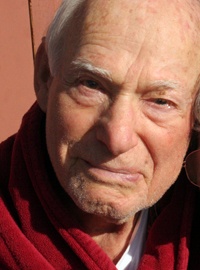Myron J. Stolaroff (1920-2013) was a researcher and author best known for his work in psychedelic psychotherapy. He also studied the effects of mescaline, LSD, and other drugs on human creativity. Stolaroff received his master’s in electrical engineering from Stanford University in 1941.
Changing the World With Sound
Stolaroff and his colleagues won the first Technical Achievement Grammy Award in 2008. In 1948, they invented a magnetic tape recorder (the Ampex 200A) while working for the Ampex Corporation. It revolutionized the recording and radio industries. It made it possible to record radio programs and air them later, eliminating the need to do live shows. Also, classic hit songs such as 1954s Rock Around the Clock by Bill Haley and Nat King Cole’s Unforgettable from 1952 were recorded using the Ampex 200A.
Professional Endeavors
Stolaroff had been interested in religion and spirituality since he was in his 30s. He practiced meditation and frequently went on retreats in nature. In 1966, he took LSD for the first time. The experience so profoundly changed him he devoted the rest of his life to learning about it and how to use it effectively to benefit the world.
In pursuit of his new goals, Stolaroff established the Foundation for Advanced Study in Menlo Park, California in 1960. He served as executive administrator of a research group doing clinical studies on people using LSD and mescaline. Stolaroff and other researchers at the foundation published several papers on their work in the 1960s.1–6 Among these was a study that looked at how mescaline and LSD affected creative problem-solving.3 The results showed that the compounds made problem-solving easier especially in the illumination phase (also known as the ‘eureka’ phase) of creativity. In addition, the results suggested the increased creative ability lasted for several weeks after the psychedelic problem-solving sessions.
The passing of the US Controlled Substances Act of 1970 ended human research into the psychedelics and Stolaroff was forced to end his work at the foundation.
Stolaroff studied MDMA (3,4-methyl enedioxy methamphetamine) in 1978 after his first experience taking the drug. However, the passage of the 1986 Controlled Substance Analogue Act made MDMA illegal, halting his research once again. From there, he funneled his energy into his meditation practice7 and joined the board of directors of The Albert Hofmann Foundation.
In 1993, Stolaroff and his colleague Charles Wells published the preliminary results of their psychotherapy studies using 2C-T-2 and 2C-T-7.8 These compounds are like mescaline and were first synthesized by Alexander Shulgin. They found the drugs were well tolerated in the study subjects. The participants described improved “…clarity of thought, flow of insights, communication with others, visual perception, energy level, feelings of well-being, and expanded dimensions of thought.” Forty-one of the 45 participants said they would repeat the experience.
In 2005, Stolaroff authored the book The Secret Chief Revealed: Conversations with Leo Zeff, Pioneer in the Underground Psychedelic Therapy Movement.
More information on Myron Stolaroff is found on The Vaults of Erowid website, in his autobiography Thanatos to Eros: 35 Years of Psychedelic Exploration, Ethnomedicine and the Study of Consciousness, and in Psychedelic Salon podcasts.

